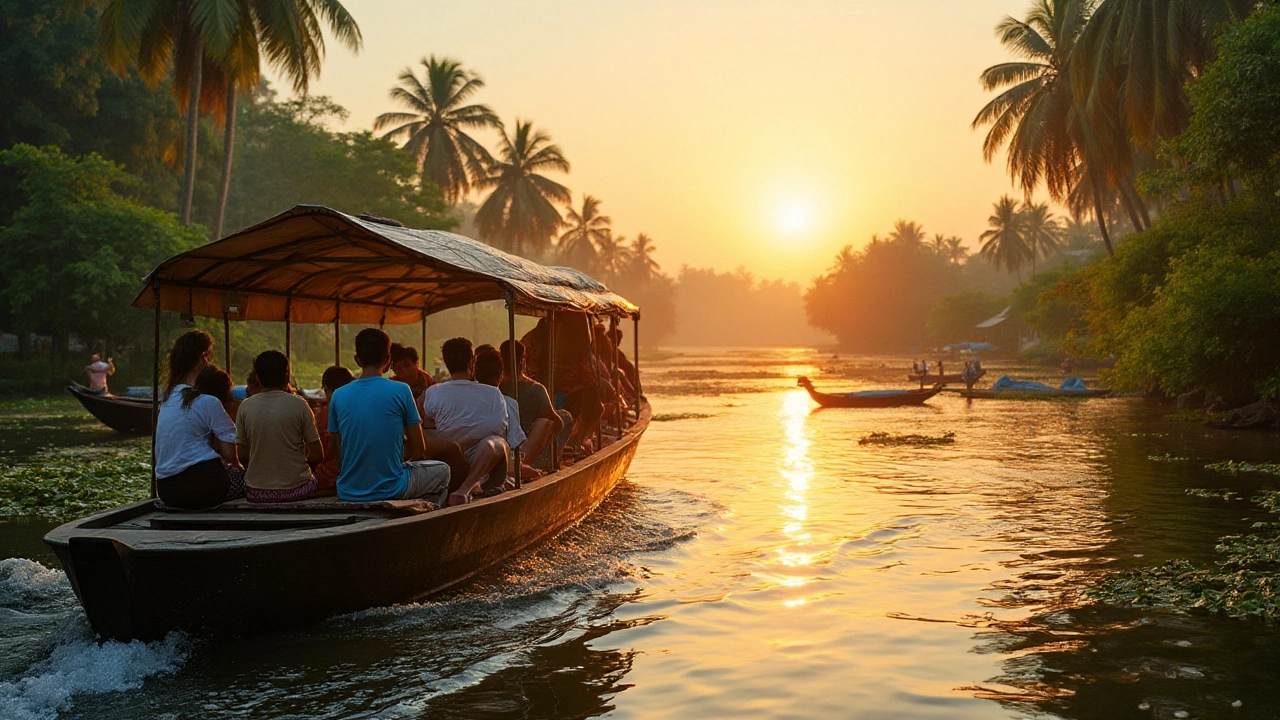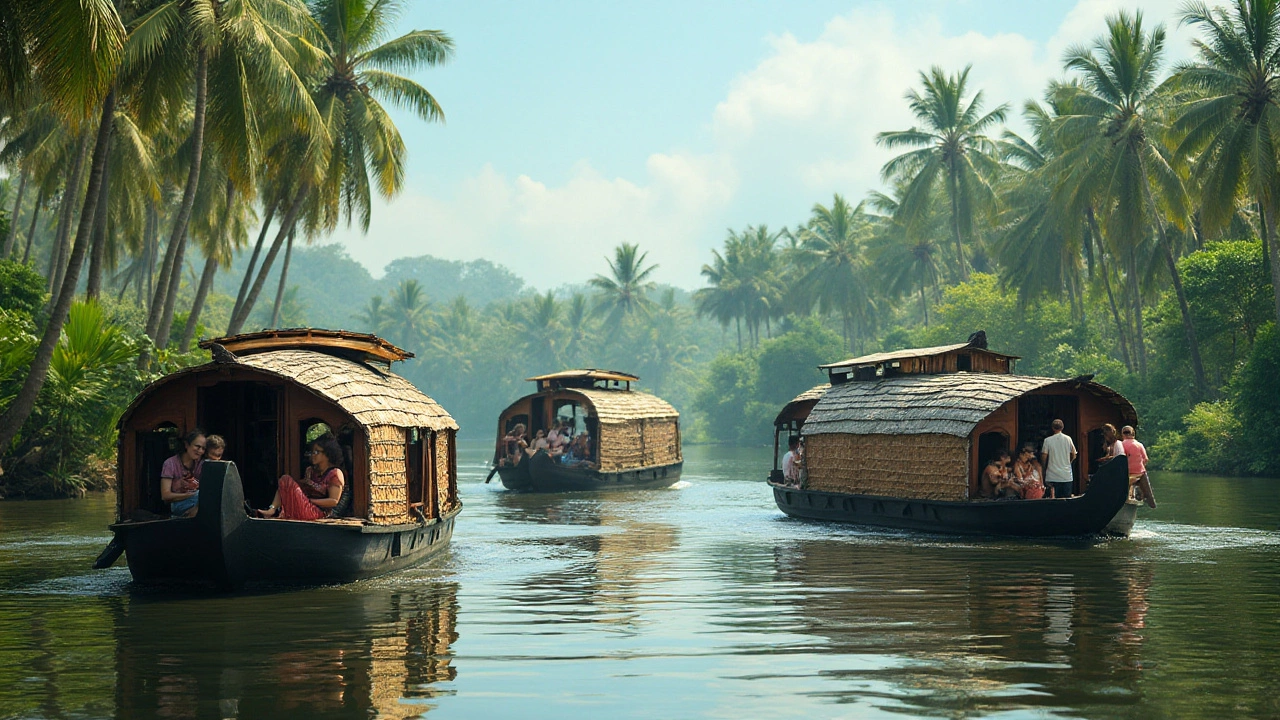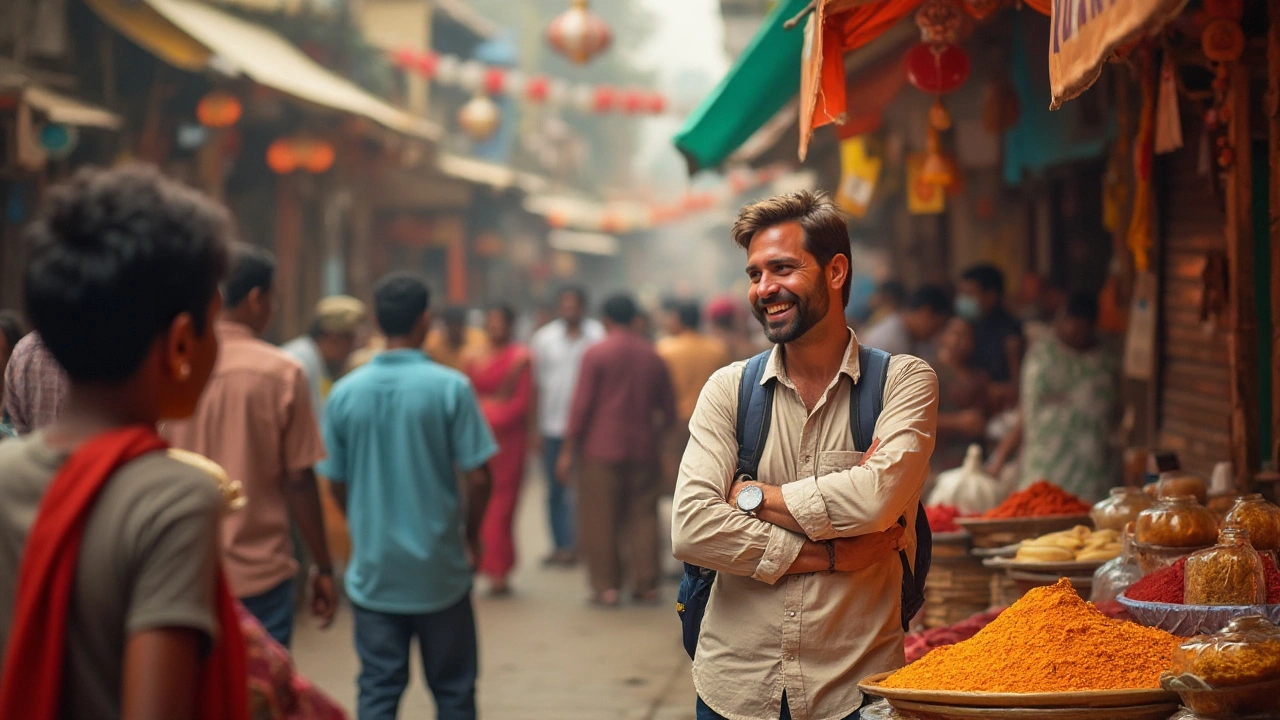Exploring South India: Is It a Costly Adventure?
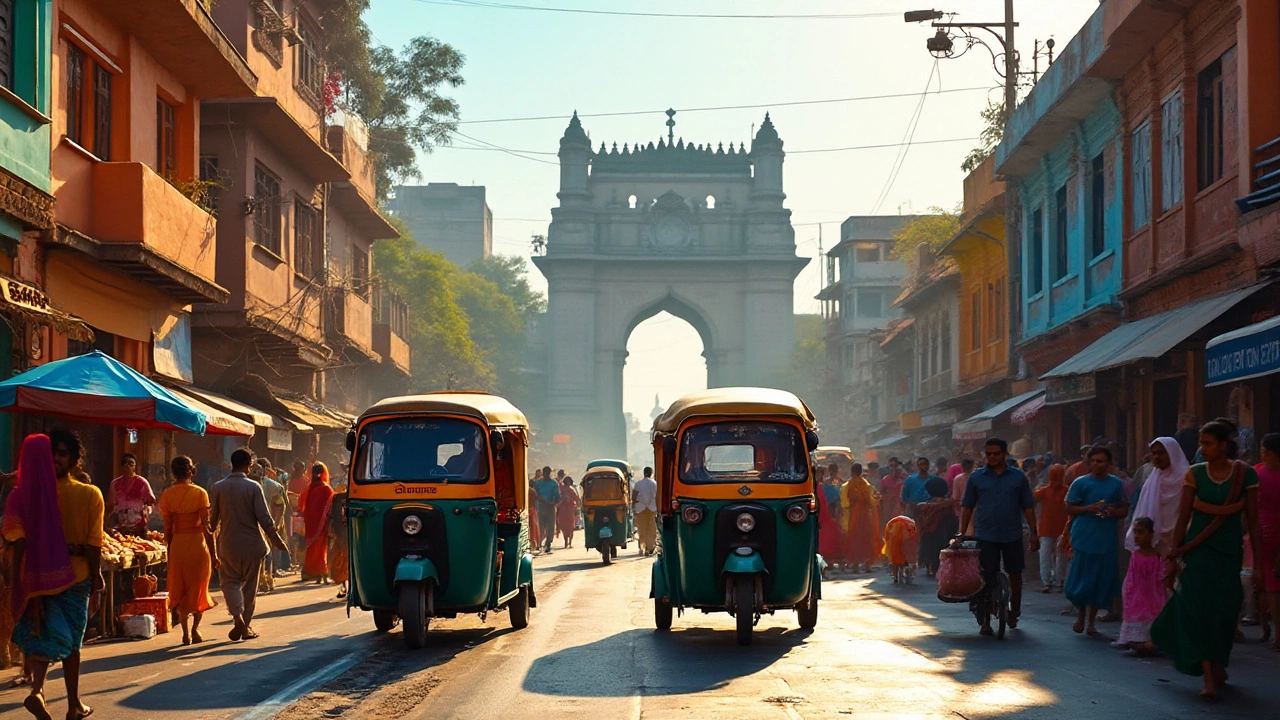
Picture bustling markets, serene temples, and sprawling tea plantations. South India is a tapestry of colors and cultures, promising an adventure at every turn. Yet, many travelers wonder, 'Is it expensive to visit?' The answer is nuanced and largely depends on how you plan your journey.
From economically friendly lodgings to luxurious resorts, choice abounds and significantly impacts your budget. Public transportation and local eateries offer authentic experiences at reasonable prices, while private cars and fine dining can elevate expenses.
The key to managing costs lies in understanding the range of options available, adapting to local norms, and savoring the region's unique blend of heritage and modernity. Whether you're backpacking on a shoestring or indulging in upscale comforts, South India can cater to varied budgets, promising unforgettable moments at every price point.
- The Cost of Accommodation
- Transport Expenses
- Cuisine and Dining
- Exploring Tourist Attractions
- Shopping and Souvenirs
- Tips for Budget Travelers
The Cost of Accommodation
Traveling across South India, an area rich in cultural diversity and stunning landscapes, presents a wide array of accommodation options. From budget hostels to luxury hotels, the South India travel scene caters to every wallet size. For many budget-conscious travelers, affordable accommodations can significantly help keep expenses in check. Backpacker hostels are dotted throughout major cities such as Bangalore, Chennai, and Hyderabad. Here, a comfortable bed in a shared dorm can cost as little as 500 INR per night, perfect for those looking to meet fellow travelers and keep costs low.
However, for tourists seeking more privacy without breaking the bank, a plethora of guesthouses and mid-range hotels await. These establishments often offer cozy, simple rooms with private bathrooms at a price range between 1,500 to 3,000 INR. You'll find delightful surprises, too, like charming homestays nestled in the hills, giving both a taste of local life and a respite from bustling city energy. A significant draw to South India is its picturesque heritage hotels. These are often converted from old palaces or mansions and provide a unique lodging experience, reflecting the region's historical grandeur. Staying in one might hover around 5,000 to 10,000 INR per night, but such establishments often include exquisite traditional meals and guided tours that enhance their value.
Luxury on a Budget
Luxury hotels in South India showcase unrivaled elegance, meeting global standards while infused with regional charm. These range from sprawling resorts with private beaches in Kerala to opulent city hotels. Rates for such exclusive experiences typically start at around 10,000 INR and can ascend well beyond depending on the opulence and services offered. "Staying in a luxury hotel can transform your vacation into a memorable experience," says a travel review from Lonely Planet, emphasizing how these accommodations are often landmarks in their own right.On the east coast, Pondicherry offers yet another gem in the form of affordable boutique hotels and French-inspired villas. These accommodations not only provide a beautiful place to stay but are also deeply connected to the locale's history and architectural aesthetics. To stretch your budget further, platforms like Airbnb present distinctive stays, including treehouses and rural retreats that provide genuine interaction with local culture while offering savable options.
Tips for Booking
When planning your trip, timing can play a crucial role in accommodation costs. The tourist season, typically from November to February, may see prices spike, so booking in advance or traveling during the off-season can lead to significant savings. Also, leveraging online booking websites can yield substantial discounts and exclusive deals. Here’s a quick tip: often, directly contacting smaller hotels or guesthouses for reservations can result in better rates or complimentary upgrades, as these businesses value direct interactions over third-party commissions.Ultimately, South India's array of lodging options means every traveler, whether thrifty and adventurous or luxury-seeking and laid-back, can find a place to rest that aligns harmoniously with both their budget and their journey's aspirations.
Transport Expenses
Navigating through South India offers a multitude of transport options tailored for every kind of traveler. Understanding these options can significantly affect your budget. India's extensive railway system, one of the largest in the world, connects even the most remote destinations. Trains are usually the go-to choice for intercity travel. Opt for sleeper class for budget-friendly comfort or splurge a bit on AC classes for added conveniences like meals and air-conditioning. The quintessential journey aboard an Indian train isn't complete without engaging with local passengers, who often share food and stories warmly.
Buses offer another way to traverse the intricate landscapes of South India. State-run buses are incredibly cheap, though they can be crowded and uncomfortable. Private buses, with their added comfort and direct routes, cater to travelers seeking a more pleasant ride, albeit at a higher cost. While taxis and ride-sharing apps like Uber and Ola have become prevalent in urban areas, they're not as budget-friendly for long distances. They are, however, perfect for short rides within cities, especially during off-peak hours.
"The best way to find yourself is to lose yourself in the service of others," Mahatma Gandhi once said, capturing the essence of the travel experience where interactions with others enrich the journey even as you navigate crowded buses or shared rides.
For a truly immersive experience, consider renting a scooter or motorbike, a popular option with tourists and locals alike. This mode of transport not only offers freedom but also a chance to discover hidden gems at your own pace. Before embarking, ensure you are comfortable with local driving conditions and carry an international driver's license.
Urban centers like Bangalore, Chennai, and Hyderabad boast efficient metro services, reducing travel time and costs significantly. A day's traveling on a metro can be much cheaper than multiple cab rides, making it an attractive option for budget travelers. Understanding the local metro system, however, requires a bit of research and a map at hand.
Finally, domestic flights connect major cities across India and can be reasonably priced, especially if bookings are made well in advance. Watch out for flash sales and discounts by keeping tabs on airlines and travel aggregator sites. Though flights are the quickest option, they might not provide the same enriching tapestry of experiences that trains or buses do. Whether you're a penny-pinching backpacker or a traveler savoring a bit more luxury, South India travel has myriad transport options ready to fit seamlessly into your journey, each with its own flavor of adventure.

Cuisine and Dining
South India is a culinary odyssey waiting to enchant your taste buds with its vibrant and diverse flavors. The region's cuisine is renowned for its bold spices, aromatic herbs, and distinctive textures. As you traverse through this part of India, the sheer variety of dishes can be overwhelming, each state within the region holding its own unique culinary identity. Whether savoring a simple dosa from a roadside stall, adorned with piping hot sambhar and coconut chutney, or indulging in a lavish seafood platter at a coastal restaurant, the South India travel experience is incomplete without its food.
Street food is an essential experience, not just for its affordability but for its authenticity and taste. Each city has its own specialties. For instance, Chennai offers the popular 'sundal', a delightful chickpea snack often enjoyed on Marina Beach, while Bangalore is famous for its 'masala dosa'. Dining at these stalls is an excellent way to enjoy delicious meals that won't strain your wallet. On the other hand, there are also plenty of upscale dining options that offer unforgettable gastronomic experiences set against stunning backdrops, adding a touch of elegance for those willing to splurge.
In South India, beverages play a significant role in the dining experience. Freshly brewed filter coffee is practically a ritual, with a rich aroma that draws locals and tourists alike into every cafe and household. There's also the refreshing 'sambharam', a spiced buttermilk that serves as the perfect antidote to the region's tropical weather. With a culinary history that dates back centuries, South India's food is deeply interwoven with its culture and traditions, making every meal a journey through time.
When it comes to festive occasions, the dining tables in South Indian households transform into vibrant displays of culinary art. The traditional 'Sadya', a vegetarian feast served on a banana leaf during Onam, features an assortment of up to 20 dishes including 'avial', 'olan', and 'payasam'. Such experiences are not just about eating but participating in centuries-old customs, bringing the community together and offering travelers insight into the region's rich heritage. As travel writer David Rocco puts it,
"Eating in South India is a sensory explosion, an immersion into a cultural experience that's much more than the food on your plate."
Whether you're dining at a high-end restaurant or sampling street food, understanding the local ethos can enhance your culinary experiences. For example, meals are traditionally eaten with the right hand, often sitting cross-legged on the floor, as it is believed to be a more engaging and connected way to enjoy your food. And don't be too quick to ask for cutlery; embracing traditional dining customs can provide a deeper appreciation of the cuisine and its cultural significance.
Exploring Tourist Attractions
South India boasts a dizzying array of tourist attractions that cater to all kinds of adventurers, history buffs, nature lovers, and spiritual seekers. One cannot miss the breathtaking architecture of the Meenakshi Amman Temple in Madurai. This historic temple is an ode to ancient Dravidian architecture, housing hundreds of intricately carved pillars and towering gopurams that are a feast for the eyes. The vibrant energy here, as pilgrims flock to offer prayers, is something that must be experienced firsthand. Not too far away, the breezy backwaters of Kerala offer a contrasting experience. You can glide through the serene waters on a traditional houseboat, taking in the lush landscapes and tranquil villages dotting the canals. Each day spent cruising can offer its own unique perspective of local life along the canals.
For those captivated by the treasures of the past, the rock-cut temples of Mahabalipuram provide a journey back in time to the Pallava dynasty. With intricately carved panels depicting scenes from Hindu mythology, these monuments are not only UNESCO World Heritage Sites but also testimonies to the masterful craftsmanship of a bygone era. As you explore these carvings in the light of the setting sun, it's easy to lose yourself in stories told by stone. An equally mesmerizing historical spot is the city of Hampi, famed for its boulder-strewn terrain and ancient ruins that echo the grandeur of the Vijayanagara Empire. Navigating the expansive ruins can be a day's worth of exploration, each site unraveling new surprises from royal enclosures to ornate temples. The stone chariot at the Vitthala Temple complex is particularly iconic and a popular subject for photographers.
While these attractions might paint a picture of the past, South India holds just as many wonders for the modern traveler. Cities like Bengaluru and Chennai boast thriving arts and music scenes, with numerous events happening year-round. From Indie film festivals to vibrant cultural celebrations, there is always something to immerse yourself in. You can also catch a Carnatic music concert or a Bharatanatyam performance, both pillars of South Indian culture, at numerous venues across these metropolitan centers. Perhaps, artist and historian Dr. Geeta Chandran sums it up best when she states,
"South India's cultural landscape is both rooted in tradition and brimming with innovation, inviting every traveler to partake in its symphonic dance of past and present."Beyond its historical and cultural wealth, South India is equally bountiful with natural beauty. Hill stations like Coorg and Munnar offer cool respite with their rolling tea plantations and mist-covered peaks. A trek through these verdant landscapes amidst the wildlife of the Western Ghats can be a rejuvenating experience. Each adventure unfolds a different facet of South India's enchanting persona, leaving you with stories to carry far beyond your travels.
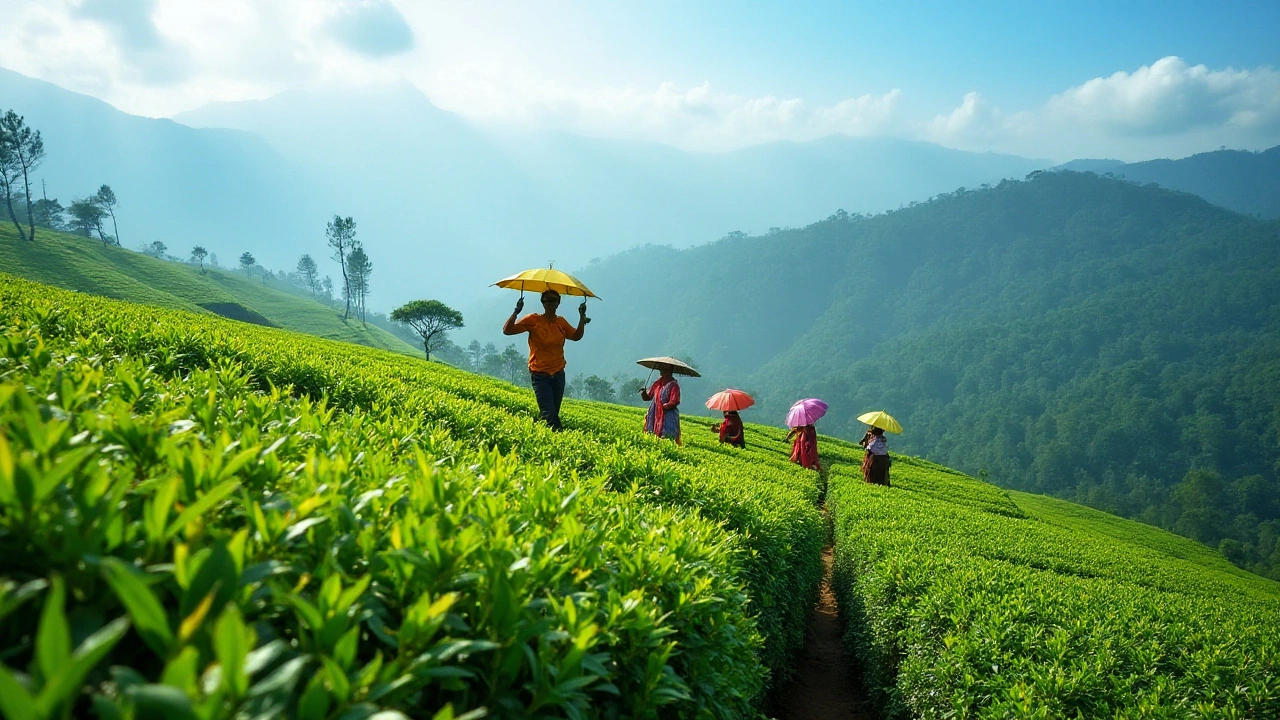
Shopping and Souvenirs
Meandering through the vibrant bazaars and quirky shops of South India is as much an experience as a transaction. With its rich tapestry of culture and tradition, the region offers a myriad of unique treasures just waiting to be discovered. Shopping here is not just about buying items; it's an immersive interaction with the artisans, their stories, and the essence of India itself. From intricately woven textiles to finely crafted gold jewelry, each item has its own tale—a whisper of ancient skills passed down generations. These markets are as vivid and diverse as the hues of a sunset on a Kerala beach, reflecting the eclectic blend of influences that make this region so distinctive.
As you navigate the markets, you'll find that bargaining is almost an art form in itself. The merchants are friendly yet shrewd, eager to strike a deal but with a knowing smile that suggests they’ve been at this game for a long while. Take, for example, Mysore silk, a legacy that dates back centuries and is synonymous with elegance and status. Buying a genuine Mysore silk saree is akin to acquiring a piece of royalty, with its softness rivaling only the smooth touch of a gentle breeze. Similarly, brass and bronze artifacts, often found in the city of Madurai, capture religious motifs and historical legends with such depth and detail that each piece seems almost alive. South India travel often leads travelers to these keepsakes, which serve as cherished mementos of their journeys.
One cannot overlook the enticing aroma emanating from the spice markets, particularly in Kerala, aptly dubbed the Spice Coast for its historical trade legacy. Spices from this region are famous worldwide; their potency and flavor complexity are unmatched. Walking through these markets, you feel enveloped by the scent of cardamom, cloves, and pepper—each adding a symphony to culinary creations around the globe. For tea lovers, a visit to Munnar is an absolute treat, as the lush tea plantations yield some of the finest brews. Bringing home a packet of these teas isn't merely about the taste—it's about sharing a piece of Indian hospitality with your loved ones.
As The Hindu newspaper eloquently puts it, "The art of shopping in India is a balanced dance of exploration and negotiation, where every item tells a story, and every market echoes with history."Moving onto the coastal wonders, conch and shell jewelry, especially from places like Goa, capture the essence of the ocean. These organic pieces, often handpicked and polished with care, carry the waves’ whispers and the sun's warmth. In urban centers like Bengaluru, you can explore modern Indian fashion, which juxtaposes traditional motifs with contemporary designs. Boutiques and designer stores offer innovation within tradition, catering to stylish locals and travelers seeking something unique. The city’s burgeoning art scene also means you can find experimental art pieces and modern paintings, often inspired by India's cultural kaleidoscope.
For travelers looking to experience budget travel India without skimping on the joy of finding the perfect souvenir, it’s wise to tap into local knowledge. Often, the lesser-known stalls house the most delightful surprises, and opting to purchase directly from artisans not only assures authenticity but supports their craft. Consider exploring nighttime markets, like the one in Chennai, where the buzz of activity and the evening’s cool air combine to create an unforgettable shopping experience.
Tips for Budget Travelers
Exploring the vivid landscapes of South India needn't be an extravagant endeavor. With thoughtful planning, travelers can experience the essence of this region without stretching their purse strings. One of the first things to consider is the timing of your visit. Avoiding the peak tourist seasons, which generally span the winter months from December to February, South India travel can be significantly cheaper in terms of flight fares and accommodation. Monsoon months, June through September, though wet, present a quieter and more affordable travel window. The lush greenery during this period adds an enchanting touch, making it worth considering for those adventurous at heart.
Accommodation offers a spectrum of choices suited to various budgets. Opting for homestays or budget hostels provides not only savings but an authentic glimpse into local life. Many travelers recommend utilizing websites and apps that specialize in budget recommendations to find the best deals. These often come with insider reviews, aiding in making informed decisions. Embracing public transport is another savvy move. South India's train network, while robust and affordable, offers an opportunity to immerse oneself in the local pace and scenery. Buses, though variable in comfort, are a cost-effective alternative, linking sprawling urban areas to remote destinations.
As Lonely Planet suggests, "Travel is affordable for those who keep their eyes open for ways to save money without compromising the joy of new experiences."
When it comes to nourishment, street food is a delightful way to manage expenses while treating your taste buds. Regions like Tamil Nadu and Kerala are renowned for their bevy of flavors, from spicy curries to sweet delicacies. Visiting local markets and trying regional foods not only saves on dining costs but also enriches the travel narrative with unforgettable culinary tales. For those prone to frequent dining at restaurants, choosing lunch over dinner can be a clever strategy, as many eateries offer substantial day-time discounts.
Shopping can often stretch budgets unexpectedly, but with a tactical approach, it is possible to indulge in souvenirs without overspending. Consider buying locally made handicrafts or visiting government-run emporiums, which frequently offer fixed pricing and authentic artifacts, eliminating the need to haggle excessively. Carrying extra luggage can escalate costs, so cautious purchasing and packing are wise. Moreover, traveling with a flexible itinerary can present unforeseen cost-saving opportunities like last-minute deals or unexpected travel companions wishing to share expenses, yielding both savings and cherished memories.
| Expense | Average Cost |
|---|---|
| Hostel Night Stay | $10 - $20 |
| Local Bus Fare | $0.50 - $2 |
| Street Food Meal | $2 - $5 |
Adopting these budget-conscious approaches allows travelers to enjoy the rich cultural tapestry of South India without financial stress. By embracing local norms, being open to staying at diverse accommodations, and relishing the local flavors, South India travel becomes not only a cherished memory but an attainable reality for those willing to look beyond the conventional paths. Whether you're backpacking or planning a family excursion, there exist myriad ways to save money and simultaneously enrich your travel experience.
